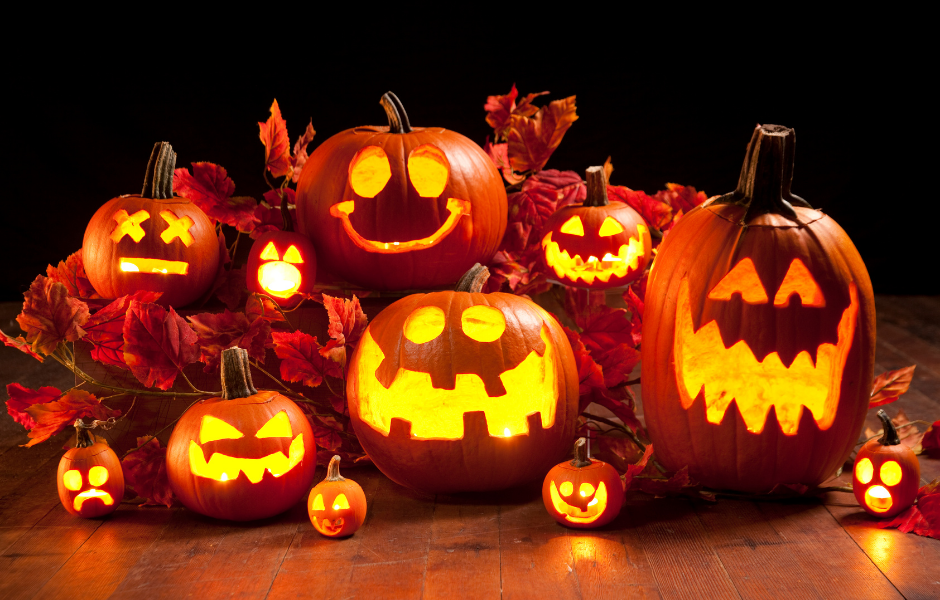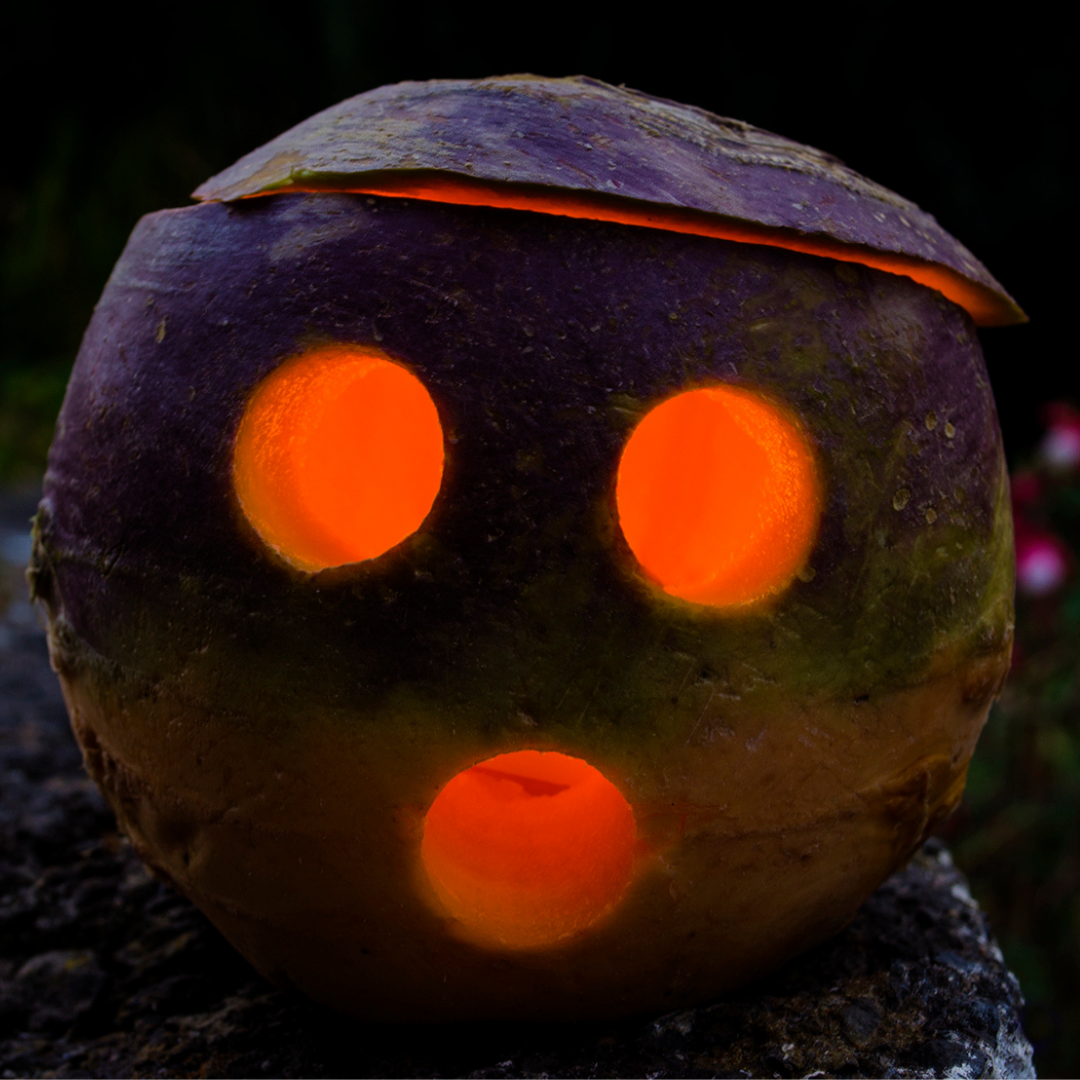
This children’s article, A kids’ guide to Jack-o’-lanterns, has been written for native English speakers and learners of English as a second or foreign language. It can help children build vocabulary, learn about Halloween traditions, and discover the fascinating legend that started it all. Written by Mark Pulley, a teacher and writer who creates fun and informative news articles for English learners.
From scary stories to glowing pumpkins
Every Halloween, millions of glowing faces appear on doorsteps across the world. These are Jack-o’-lanterns; pumpkins that have been carved into spooky faces, lit with candles, and placed outside to welcome trick-or-treaters.
But have you ever wondered where this strange tradition began? The story of the Jack-o’-lantern started long before pumpkins and plastic spiders, in the misty fields of Ireland, hundreds of years ago.
The Irish legend of ‘Stingy Jack’
The name Jack-o’-lantern comes from an old Irish folktale about a man known as Stingy Jack. According to legend, Jack was a clever but selfish man who tried to trick the Devil, and somehow succeeded!
One version of the story says Jack invited the Devil for a drink but didn’t want to pay. He convinced the Devil to turn into a coin to pay for it, then kept the coin in his pocket next to a silver cross, trapping the Devil. Jack finally freed him, but only after making the Devil promise never to take his soul.
Years later, when Jack died, he wasn’t allowed into Heaven because of his bad behaviour. But the Devil, keeping his promise, wouldn’t send him into Hell either. Instead, Jack was given a burning coal and sent to wander the dark countryside forever. He placed the coal inside a hollowed-out turnip to light his way. People began to call him Jack of the Lantern — or Jack-o’-lantern.
From turnips to pumpkins
Irish families began carving their own lanterns from turnips, potatoes, or even large beetroots. They cut scary faces into them to frighten away evil spirits and placed candles inside. When Irish immigrants moved to America in the 1800s, they discovered that pumpkins, native to North America, were much bigger and easier to carve than turnips.
Soon, pumpkins became the new face of Halloween, and the Jack-o’-lantern tradition we know today was born.
Jack-o’-lanterns today
Today, pumpkin carving has become a fun art form. Some people carve silly faces, others create monsters, cats, or famous characters. In some towns, people even hold pumpkin-carving contests to see who can make the most creative design.
Electric lights have replaced candles in many homes, and some pumpkins aren’t real at all; they’re made from plastic used again each year. But whether they’re spooky or funny, Jack-o’-lanterns still remind us of the ancient Irish legend that started it all.
So this Halloween, when you see a glowing pumpkin smiling in the dark, remember that it all began with Stingy Jack and his turnip lantern! If you’d like to learn more about the history of Halloween, visit the British Council page on the subject.

Article vocabulary list
- Legend – an old story passed down through generations
- Folktale – a traditional story told by ordinary people
- Trick – to fool or deceive someone
- Coal – a black rock that burns to give heat and light
- Wander – to walk around without a fixed direction or purpose
- Hollowed-out – having the inside removed
- Immigrants – people who move to live in another country
- Frighten – to make someone feel afraid
- Lantern – a light inside a container, often with a handle
- Tradition – a custom or belief handed down through generations
Comprehension questions
Just click the plus (+) to see the answer
1. Where did the story of the Jack-o’-lantern begin?
A) America
B) Ireland
C) England
Answer: B) Ireland
2. What was Stingy Jack known for?
A) Being kind and generous
B) Being rich and powerful
C) Being clever but selfish
Answer: C) Being clever but selfish
3. What did Jack use to carry his burning coal?
A) A pumpkin
B) A turnip
C) A beetroot
Answer: B) A turnip
4. Why did people start using pumpkins instead of turnips?
A) Pumpkins were bigger and easier to carve
B) Pumpkins looked scarier
C) Turnips stopped growing in Ireland
Answer: A) Pumpkins were bigger and easier to carve
5. What do people do with Jack-o’-lanterns today?
A) Use them only in Ireland
B) Compete in carving contests and decorate their homes
C) Eat them as Halloween food
Answer: B) Compete in carving contests and decorate their homes

Mark is a writer and EFL teacher from England with eight years’ experience. He’s passionate about travel, sport (especially football), animals, nature, and history, and enjoys helping children explore the world through language and learning.




